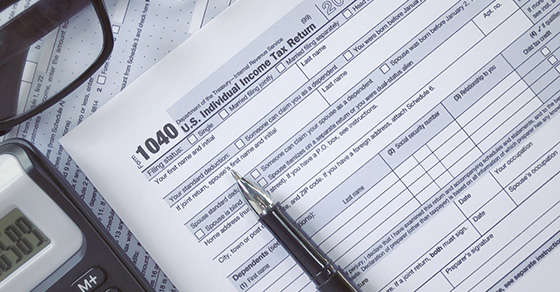
When you file your 2019 tax return, you may find yourself wondering what a tax filing status is in relation to your personal situation. You must choose one of five filing statuses to fill out your tax return, which depends in part on whether you were married or unmarried on December 31.
More than one filing status may apply, and you can use the one that saves the most tax. It’s also possible that your status options could change during the year. The tax experts at Maxwell Locke & Ritter will help spell out these details and assist you in filing taxes under the correct status.
What is your filing status?
- Single. This status is generally used if you’re unmarried, divorced or legally separated under a divorce or separate maintenance decree governed by state law.
- Married filing jointly. If you’re married, you can file a joint tax return with your spouse. If your spouse passes away, you can generally file a joint return for that year.
- Married filing separately. As an alternative to filing jointly, married couples can choose to file separate tax returns. In some cases, this may result in less tax owed.
- Head of household. Certain unmarried taxpayers may qualify to use this status and potentially pay less tax. The special rules that apply are described below.
- Qualifying widow(er) with a dependent child. This may be used if your spouse died during the previous two years and you have a dependent child. Other conditions also apply.
There are three common questions that come up when people ask what a tax filing status is for household situations. We will walk you through these below.
1. What is your filing status when you are the head of household?
Head of household status is generally more favorable than filing as a single taxpayer. To qualify, you must “maintain a household” that, for more than half the year, is the principal home of a “qualifying child” or another relative that you can claim as your dependent.
A “qualifying child” is defined as someone who:
- Lives in your home for more than half the year
- Is your child, stepchild, foster child, sibling, stepsibling or a descendant of any of these
- Is under 19 years old or a student under age 24
- Doesn’t provide over half of his or her own support for the year
Different rules may apply if a child’s parents are divorced. Also, a child isn’t a “qualifying child” if he or she is married and files jointly or isn’t a U.S. citizen or resident.
2. What is your filing status when maintaining a household?
For head of household filing status, you’re considered to maintain a household if you live in it for the tax year and pay more than half the cost of running it. This includes property taxes, mortgage interest, rent, utilities, property insurance, repairs, upkeep, and food consumed in the home. Don’t include medical care, clothing, education, life insurance, or transportation.
Under a special rule, you can qualify as head of household if you maintain a home for a parent of yours even if you don’t live with the parent. To qualify, you must be able to claim the parent as your dependent.
3. What is your filing status for marital states?
You must generally be unmarried to claim head of household status. If you’re married, you must generally file as either married filing jointly or married filing separately, not as head of household. However, if you’ve lived apart from your spouse for the last six months of the year and a qualifying child lives with you and you “maintain” the household, you’re treated as unmarried. In this case, you may be able to qualify as head of household.
Our experienced tax professionals are available to help you determine what your tax filing status is for your unique situation.
Contact us for personalized tax filing assistance. Maxwell Locke & Ritter has CPAs available to answer any of your filing questions.




